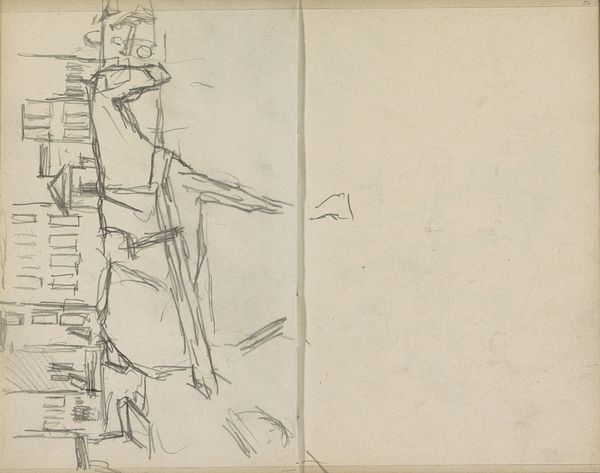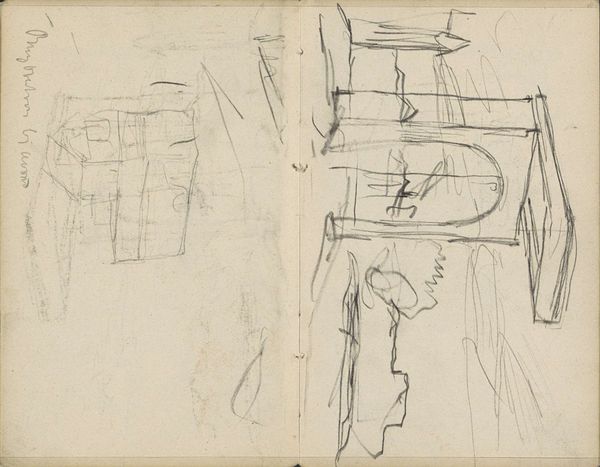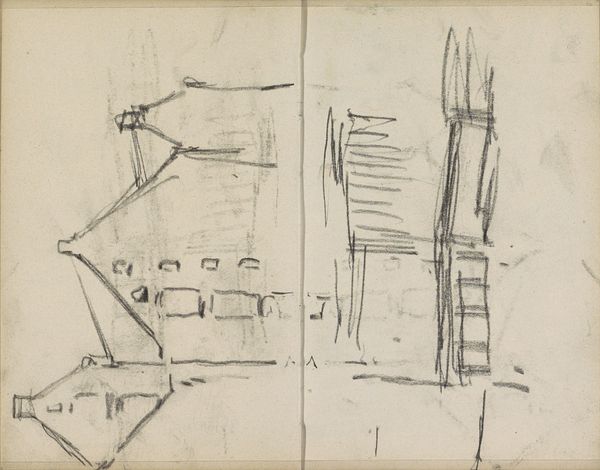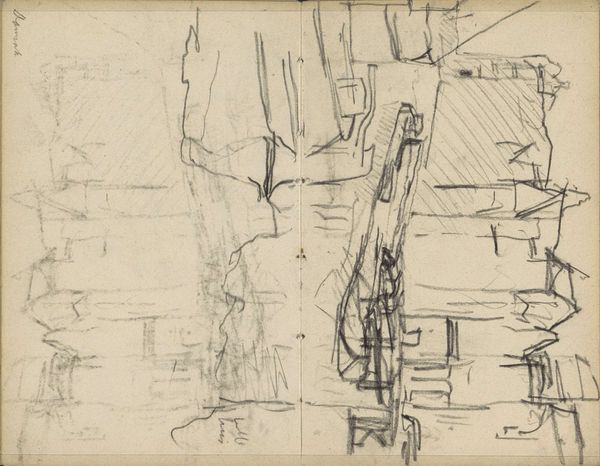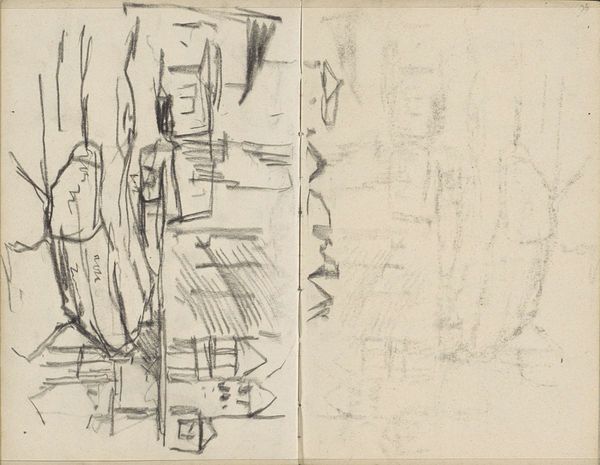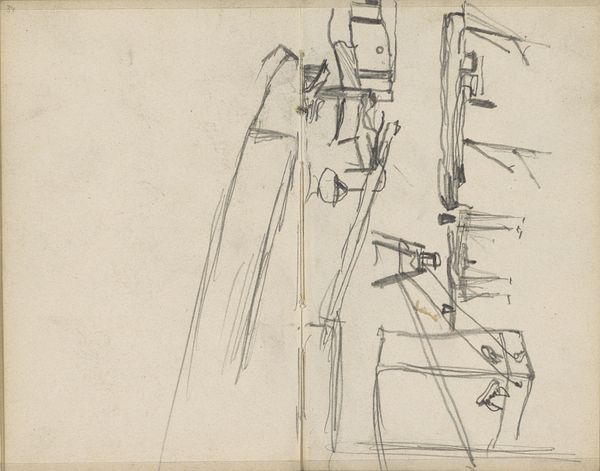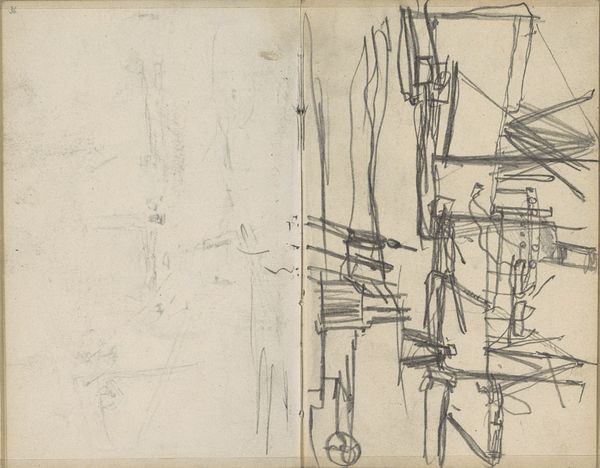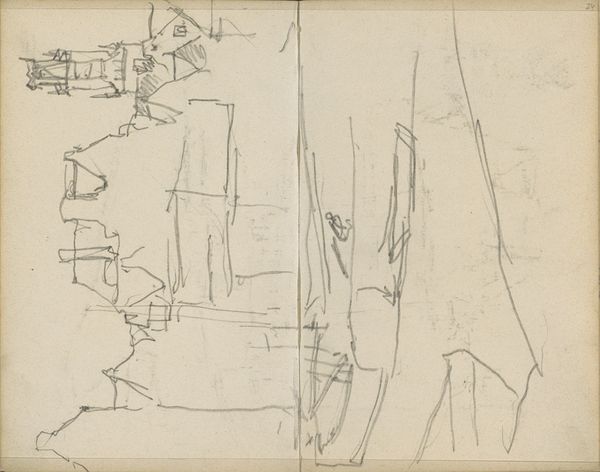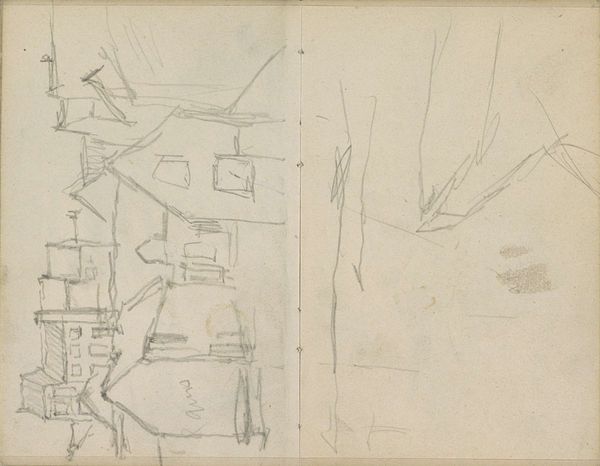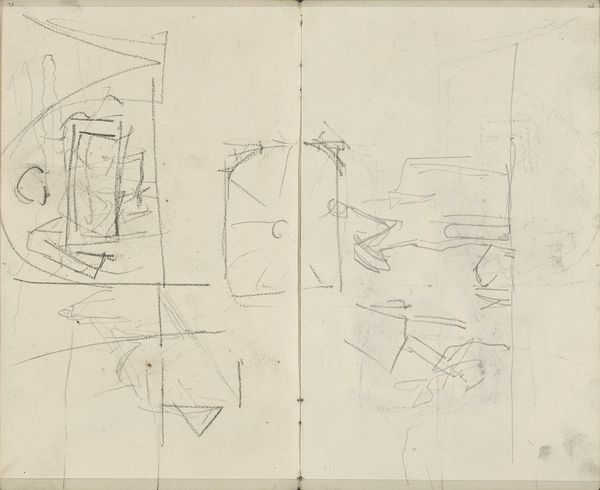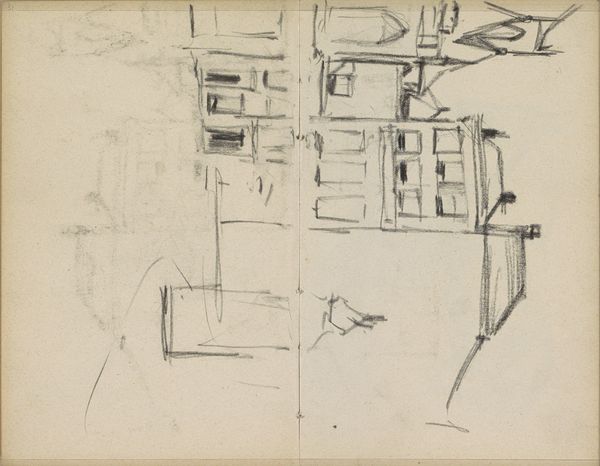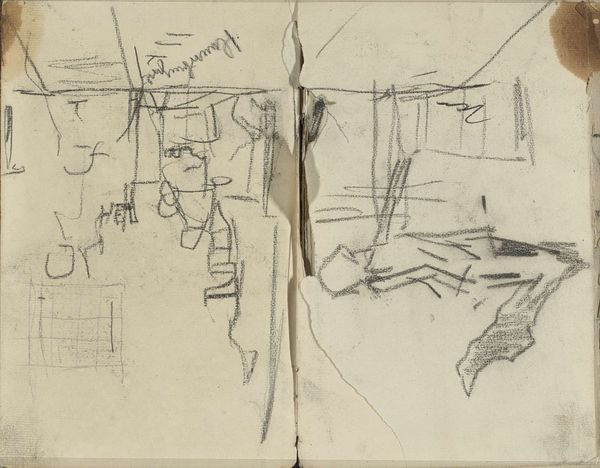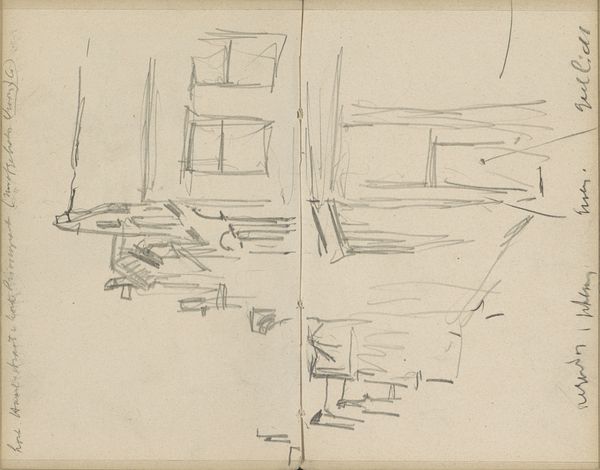
Copyright: Rijks Museum: Open Domain
Editor: This is "Ships on the Damrak in Amsterdam," a pencil drawing by George Hendrik Breitner, circa 1902, housed in the Rijksmuseum. It has the feel of a quickly jotted note, a visual reminder, captured in the artist's sketchbook. What strikes you most about it? Curator: It’s that very "note" quality, isn’t it? Like catching a fleeting thought. For me, it’s about Breitner capturing the essence of movement, of a bustling harbor scene, with incredible economy. Think of it – Amsterdam was a hive of activity then, a global port, and he boils that energy down to these suggestive lines. Does it remind you of anything in your experience? Editor: I suppose it's like when I take notes in a lecture; I don't try to get everything down, just the core concepts. I guess that makes this like a visual concept? Curator: Precisely! Consider how Breitner was influenced by Japanese prints, that sense of capturing a scene with bold, simple strokes. But there’s also a very personal feel to this, don't you think? It's in his sketchbook after all, a very intimate object. Imagine him standing there, perhaps a little windswept, quickly trying to preserve a moment he finds interesting. What do you think the image preserves beyond the basic rendering of objects in its purview? Editor: I hadn’t thought about that… the energy! The unfinished quality makes it feel alive, more so than if it were a polished, detailed painting, almost like I'm seeing through his eyes in that instant. Curator: Exactly. It invites us to participate, to fill in the blanks with our own imagination, our own experiences. Editor: I came into this thinking it was just a simple sketch, but now I realize it's a powerful snapshot of a time and a feeling. Curator: And that, in essence, is the magic of art: the ability to evoke so much with so little, to connect us across time and space, and bring our experiences to life.
Comments
No comments
Be the first to comment and join the conversation on the ultimate creative platform.
